Transform your garden into a vibrant butterfly sanctuary naturally.
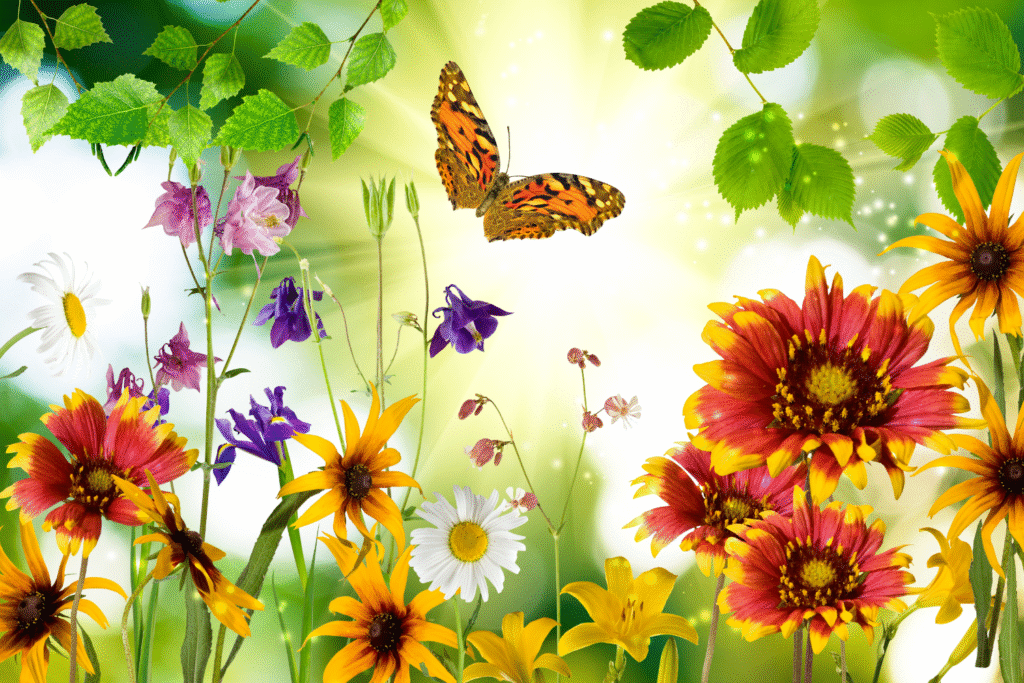
Creating a butterfly haven in your yard requires more than randomly scattering colorful flowers and hoping for the best. Butterflies possess specific preferences shaped by millions of years of evolution, seeking particular plant species that provide both nectar for adults and host plants where females can lay eggs. Understanding these preferences transforms ordinary gardens into thriving butterfly habitats that support entire life cycles rather than merely offering temporary feeding stations. The most effective butterfly gardens incorporate plants that serve multiple functions throughout the season, providing continuous blooms from spring through fall when these delicate insects are most active. Strategic plant selection can dramatically increase butterfly diversity and abundance, turning your property into a living laboratory where you observe fascinating behaviors while supporting populations that face increasing pressures from habitat loss and climate change.
1. Milkweed stands alone as the monarch’s only host plant.
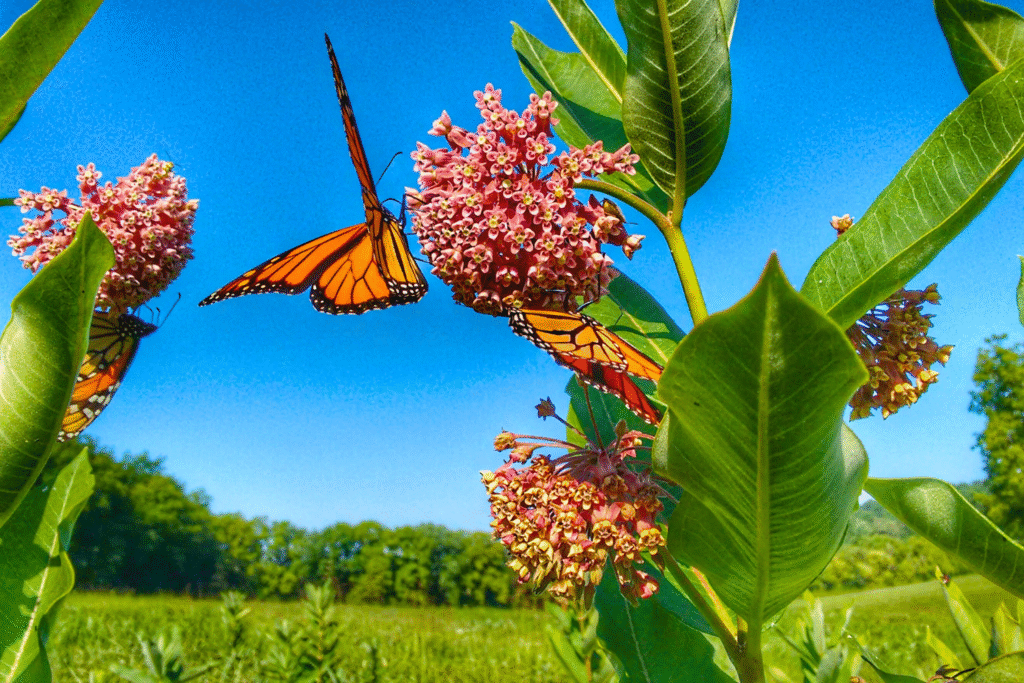
No plant matters more for monarch butterfly conservation than milkweed, as these iconic orange and black insects can only complete their life cycle on plants within the Asclepias genus. Female monarchs lay eggs exclusively on milkweed leaves, and the resulting caterpillars feed only on this plant family, ingesting toxic compounds that make both larvae and adults poisonous to predators. According to research from the Xerces Society for Invertebrate Conservation, planting native milkweed species appropriate to your region provides critical habitat for monarchs whose populations have declined by over 80 percent in recent decades. Tropical milkweed, while attractive, can disrupt migration patterns in southern regions, making native species like swamp milkweed, common milkweed, or butterfly weed far better choices. Gardens with established milkweed patches become monarch nurseries where you can observe the complete metamorphosis from tiny eggs to striped caterpillars to jade-green chrysalises adorned with gold dots.
2. Buddleia blooms draw butterflies from remarkable distances with powerful fragrance.
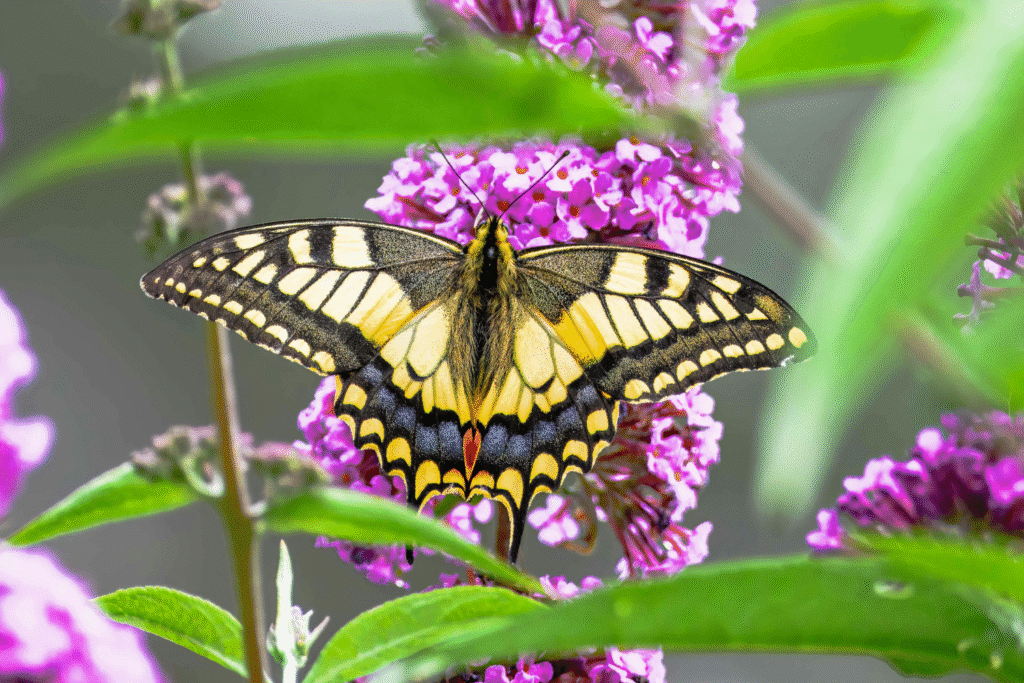
Butterfly bush lives up to its common name by producing long, cone-shaped flower clusters that attract dozens of butterfly species through intense nectar production and fragrance that carries across yards. These vigorous shrubs bloom prolifically from summer into fall, providing continuous food sources during peak butterfly activity when many other plants have finished flowering. The flowers produce such abundant nectar that multiple butterflies often feed simultaneously on single flower spikes, creating spectacular displays where swallowtails, painted ladies, and fritillaries jostle for position, as reported by the Royal Horticultural Society in their pollinator plant trials. Deadheading spent blooms encourages additional flower production that extends the season even further. While butterfly bush offers exceptional nectar, it provides no host plant services since North American butterflies didn’t evolve with this Asian native, making it important to pair buddleia with plants that support caterpillar stages.
3. Purple coneflower supports both butterflies and their caterpillar stages effectively.
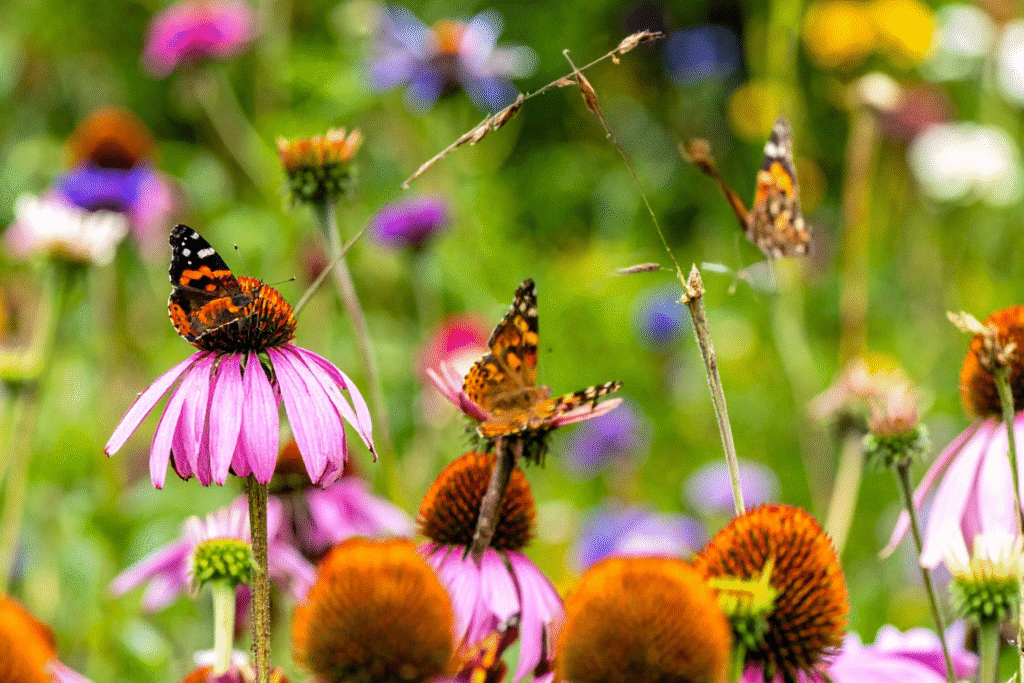
Echinacea purpurea ranks among the most valuable garden plants for butterflies, offering sturdy landing platforms on prominent central cones surrounded by nectar-rich ray flowers that appeal to numerous species. The plant’s structural design accommodates large butterflies like swallowtails that need stable perches while feeding, unlike delicate flowers that sway under their weight. According to findings from the Lady Bird Johnson Wildflower Center, purple coneflower attracts over a dozen butterfly species while also serving as a host plant for the silvery checkerspot butterfly whose caterpillars feed on its foliage. Long bloom periods stretching from early summer through fall provide reliable food sources during critical migration and breeding periods. Even after flowering finishes, the seed heads attract goldfinches and other birds, making coneflowers multi-functional additions that support diverse wildlife beyond butterflies.
4. Zinnias offer easy-growing nectar sources in endless color variations.
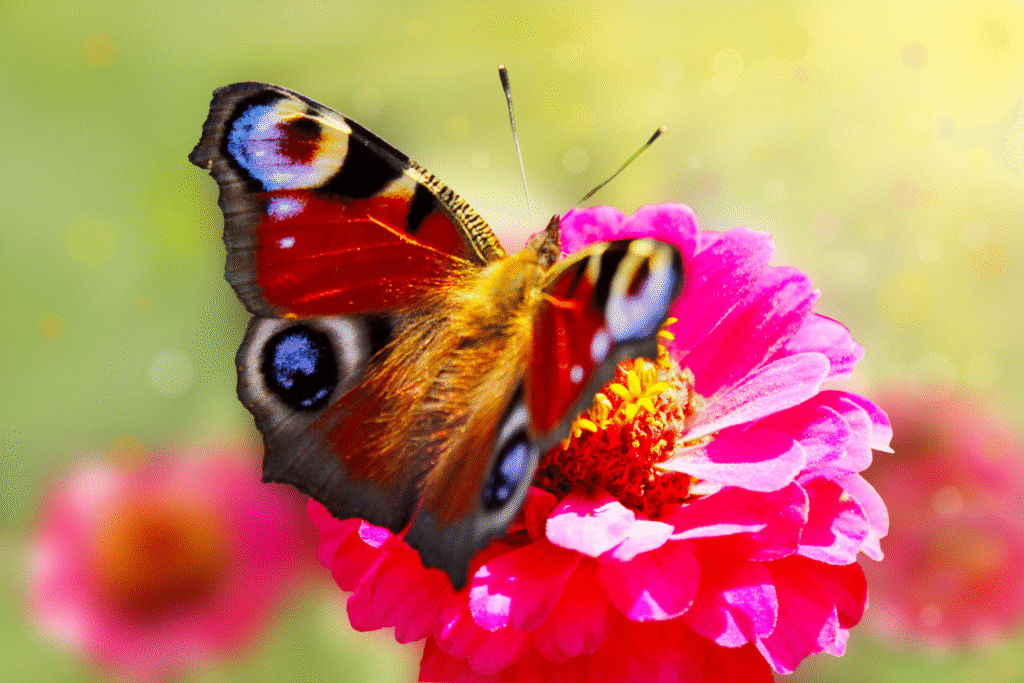
Few annual flowers rival zinnias for sheer butterfly-attracting power combined with gardening simplicity, as these Mexican natives thrive in hot, sunny conditions while producing abundant blooms from summer until hard frost. Their flat or slightly rounded flower heads create perfect landing pads where butterflies can easily access nectar while warming their wings in the sun. Zinnias come in virtually every color except true blue, allowing gardeners to create vibrant displays that appeal to human aesthetics while serving butterfly needs. The flowers produce copious nectar that replenishes quickly, supporting multiple feeding visits throughout each day. Tall varieties reaching three feet provide presence in borders while shorter cultivars work in containers, giving flexibility for gardens of any size or style.
5. Asters bloom late when other nectar sources have vanished completely.
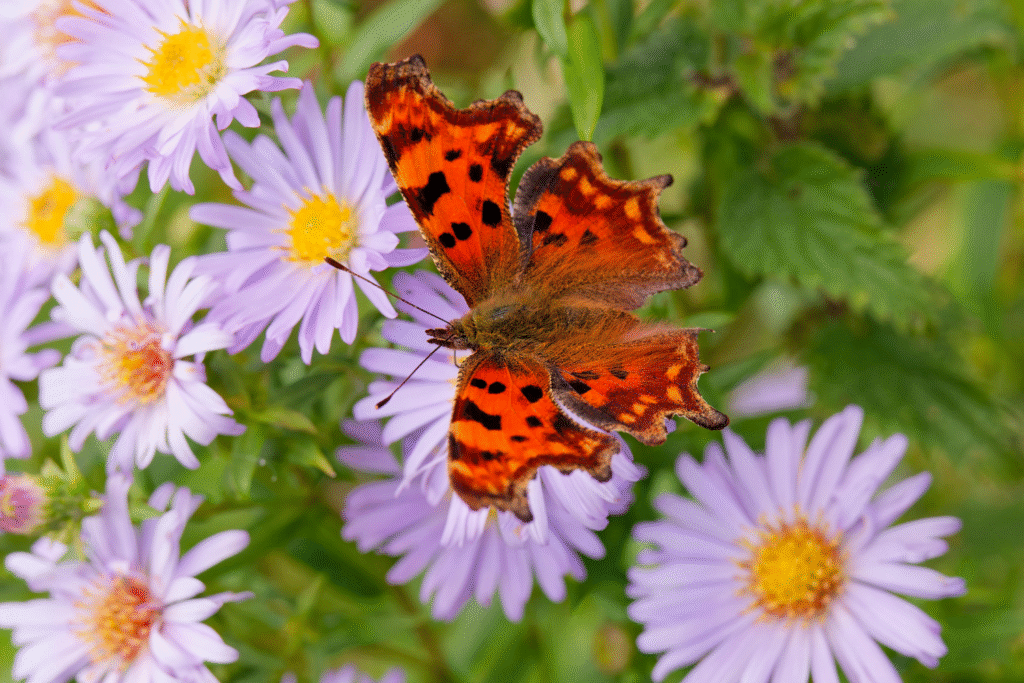
Native asters become crucial butterfly resources during fall when most flowering plants have finished blooming and insects desperately need energy sources for migration or winter preparation. These perennials produce masses of small, daisy-like flowers in shades of purple, pink, and white that cover plants so densely they appear as solid color from a distance. Monarchs migrating southward depend heavily on aster nectar to fuel their thousand-mile journeys to Mexican overwintering sites. Painted ladies, red admirals, and numerous other species also concentrate on asters during autumn, creating opportunities to observe species that may have been scarce earlier in the season. The plants range from compact six-inch groundcovers to towering six-foot specimens, offering options for diverse garden situations while providing essential late-season resources.
6. Lantana thrives in heat while producing continuous butterfly buffets.
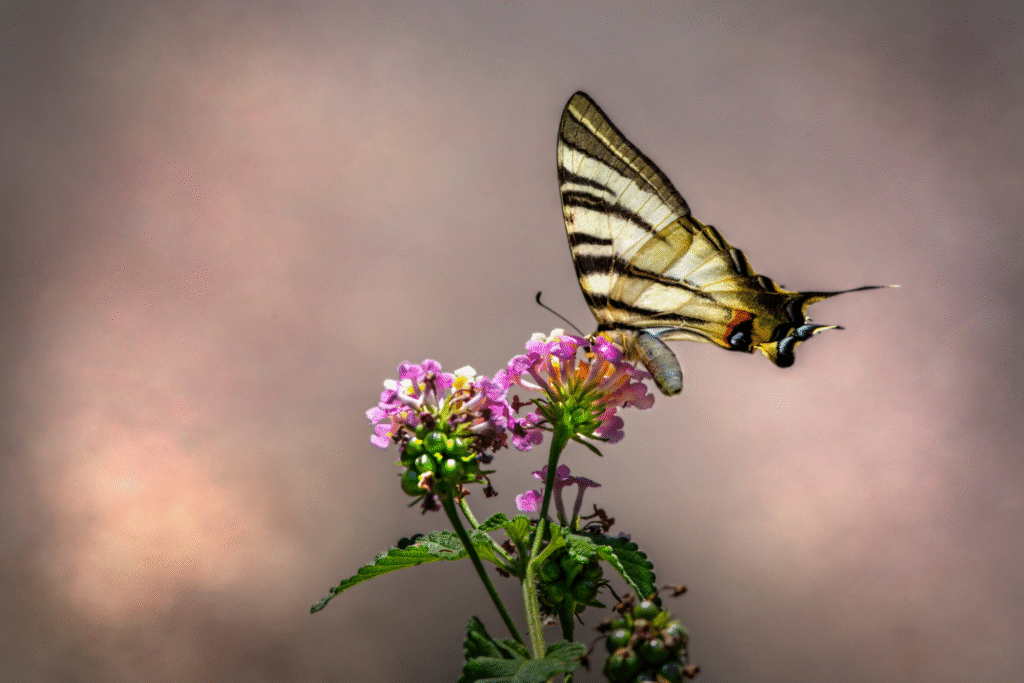
Heat-loving lantana performs best during summer’s most intense periods when many other plants wilt or reduce flowering, making it invaluable for maintaining nectar availability during temperature extremes. The clustered flower heads bloom in color combinations that shift as individual flowers age, creating multicolored displays within single inflorescences. Butterflies visit lantana constantly throughout daylight hours, with some individuals returning repeatedly to favorite plants. Lantana’s drought tolerance and pest resistance make it remarkably low-maintenance compared to more demanding butterfly plants. While it grows as a perennial in warm climates, gardeners in colder regions can treat it as an annual or overwinter plants indoors for replanting each spring.
7. Verbena produces nectar-rich blooms on sprawling or upright stems.
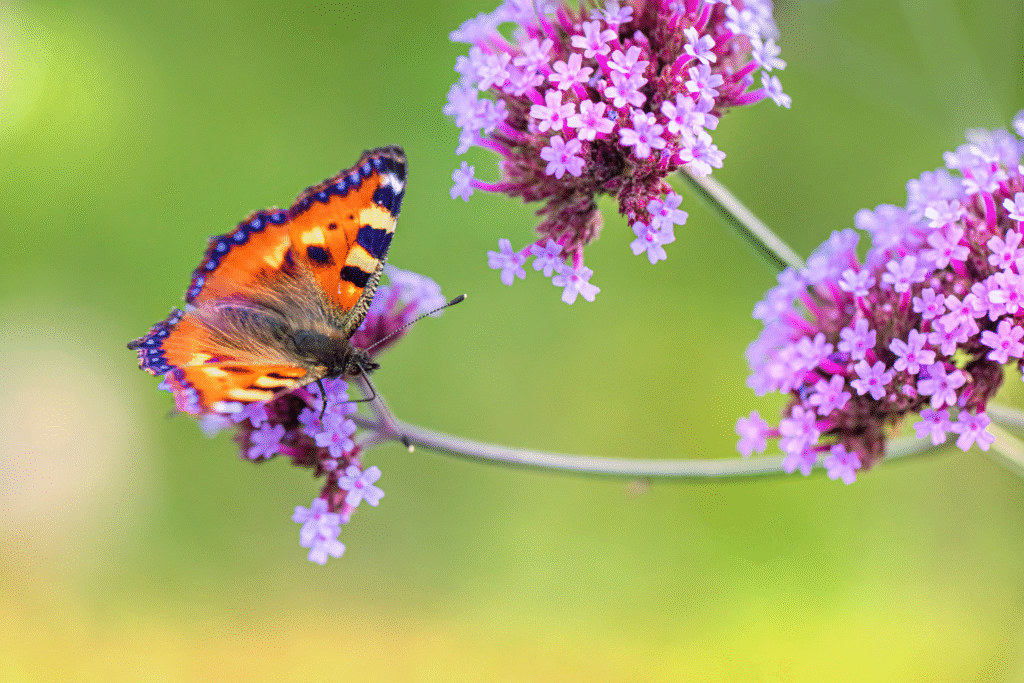
Both annual and perennial verbena species attract butterflies through clustered flowers that pack substantial nectar rewards into compact spaces, maximizing feeding efficiency for visiting insects. The plants bloom prolifically over extended periods, especially when deadheaded regularly to prevent seed formation that signals the plant to cease flower production. Tall verbena varieties create airy, see-through effects in borders that don’t block views of plants behind them, while spreading types work as groundcovers or container spillers. Swallowtails particularly favor verbena, often spending several minutes feeding at single flower clusters before moving to the next plant. The flowers’ tubular structure requires butterflies to fully extend their proboscis to reach nectar, but the reward justifies the effort.
8. Pentas flowers cluster tightly and offer accessible nectar for all species.
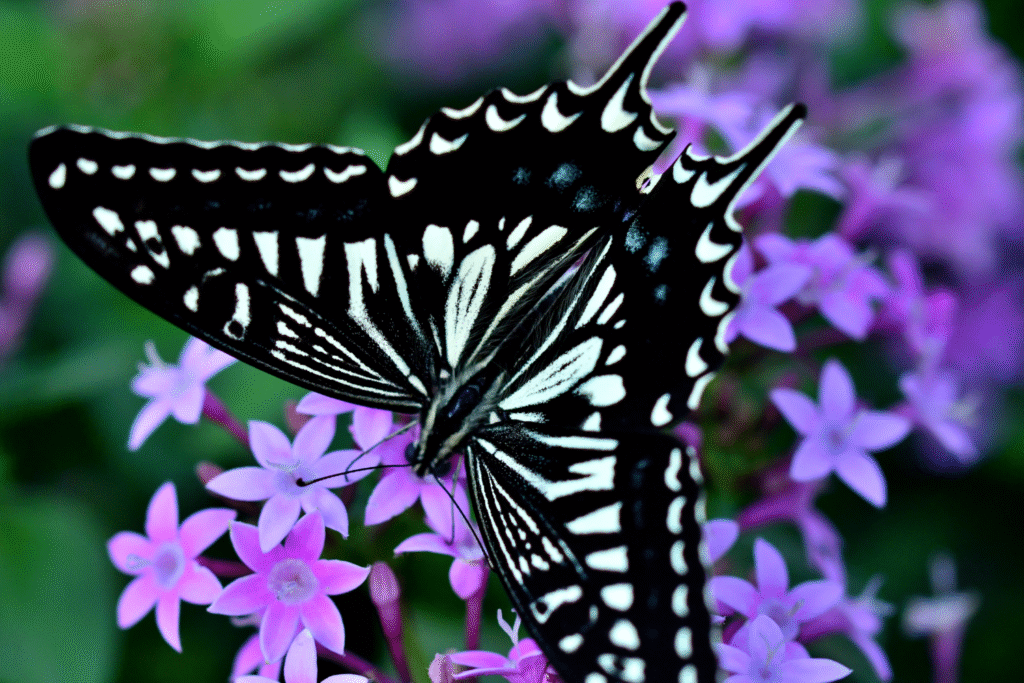
Pentas lanceolata produces dense, rounded flower clusters composed of dozens of individual star-shaped blooms that create landing pads accommodating multiple butterflies simultaneously. The flowers offer easily accessible nectar that doesn’t require the long proboscis some tubular flowers demand, making pentas particularly valuable for smaller butterfly species often overlooked in gardens designed around large, showy visitors. Continuous blooming from spring through fall in warm climates provides reliable food sources throughout butterfly season. The plants tolerate both sun and partial shade, offering flexibility for diverse garden conditions where other butterfly plants might struggle. Colors ranging from white through pink, red, and lavender allow coordinating pentas with various garden color schemes while maintaining their butterfly-attracting function regardless of cultivar selection.Retry
